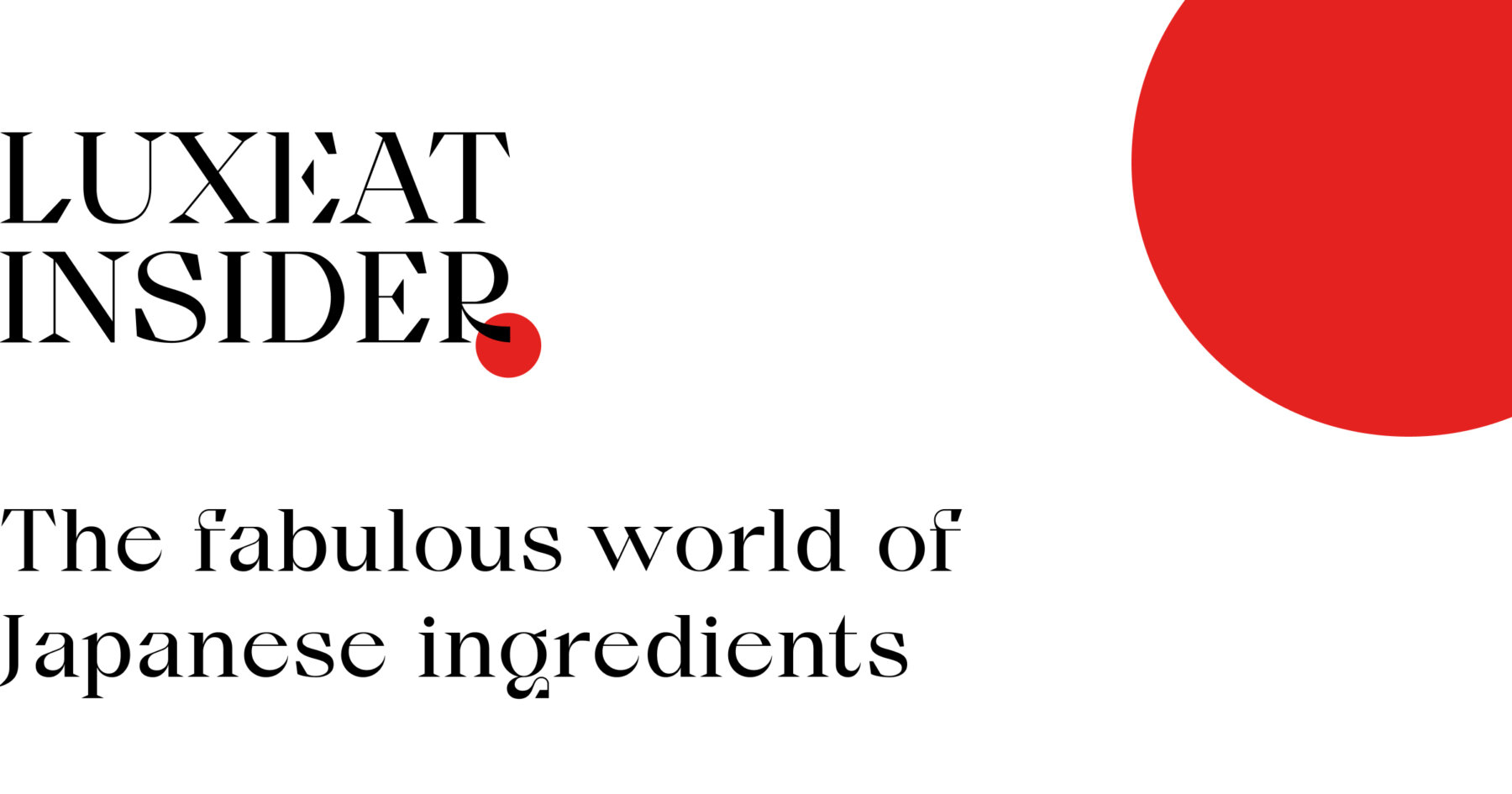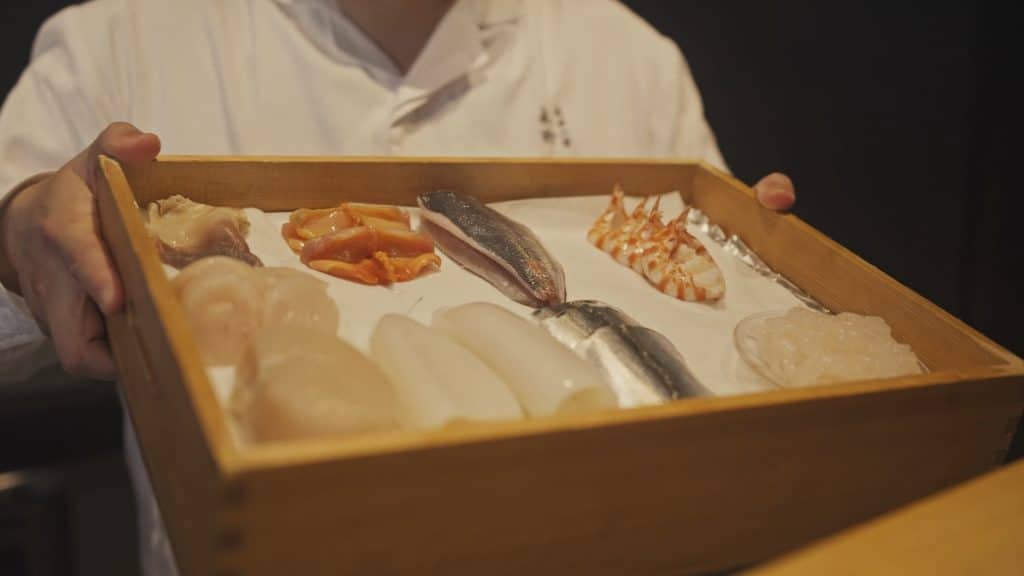
Hello foodie friends,
Following the hot, almost tropic summer, it’s a pleasure to mellow into the cooler, more structured tones of autumn. In line with this shift, we’re taking you away from the Mediterranean sunset and all the way to our longtime favourite culinary playing field: Japan.
This month, we offer you some very unusual and highly prized Japanese ingredients and for each, an understanding of the importance of the place of origin. We then take a closer look at the way some of these ingredients are protected and acknowledged through the Geographical Indication system.
We explain Yōshoku (洋食, western food) the Japanese cuisine based on Western cooking and give you a recommendation to try, in very elegant surrounds. And looking at it from another angle, a mouthwatering list of Japan’s finest Tamago Sandos & Toasts curated exclusively for Luxeat by Tokyo-based diamond and pearl specialist and foodie, Roni Xu Mori.
This month we wrap things up with a list of 15 Easy-To-Book Sushi-yas in Tokyo from celeb Japanese food advisor Andrew Gyokudari .
Enjoy! We are.
Love

The fabulous world of Japanese ingredients
From seasonal fruits and vegetables, picked at specific times of day, to local seafood found only at exact depths, seasons and locations, Japanese ingredients are bound to their specific heritage and the landscape on which they were raised. This singularity is reflected in a cuisine where each element on a plate tells the story of where and how it was produced.

15 Easy-To-Book Sushi-yas in Tokyo
The last time my friend Aiste asked me to do this exercise was in 2019. COVID has certainly altered the global food scene during the succeeding few years but the sushi industry in Tokyo remained strong with numerous new openings during the pandemic. According to Tabelog, there are over 5,000 sushi restaurants in Tokyo today, a 15% increase since the last time we published this list. The top echelon of that group, purely defined by popularity, have continued to gravitate towards the “membership only” or “introduction only” route. But not to worry, there are at least 15 sushi in Tokyo that are both easy to book (typically within a week) and worth every yen.

A closer look at Japan’s Geographical Indication (GI) label
Over the last ten years the importance and uniqueness of many unique Japanese ingredients has been recognised with and encoded into a Geographical Indication system (GI). This relatively recent legal framework was enacted in 2014 and enforced from June, 2015 and is similar to Italy’s DOP (Denominazione d’Origine Protetta) first introduced in 1963 and overhauled in 1992 to match new European Union law on Protected Designation of Origin. Or the French (Appellation d’origine contrôlée) AOC. The roots of France’s AOC can be traced back to the 15th century,…

Japan’s Top Tamago Sandos & Toasts
by Roni Xu Mori
Thoughtfully curated a mouthwatering list of Japan’s finest Tamago Sandos & Toasts, offering an array of flavors and textures that are sure to excite even the most discerning palates, inviting you on a culinary journey through the heart of Japan’s vibrant food scene.

Chef Daisuke Hayashi’s Yōshoku Creations at Roketsu London
Yōshoku (洋食, western food) is a style of Japanese cuisine based, as you may have guessed, on Western cooking. Think egg sandwiches or …ahem …”British” curry and rice ( Kareraisu ) or Hambagu (Hamburger Steak) or spaghetti with tomato sauce known as Napolitan. Dishes that are well worth exploring as an example of ultimate fusion cooking. And as well the embodiment of changes in Japan’s political and social structure, dating back to the Meiji Restoration (1868) and spanning the late Edo period and the beginning of the Meiji era when Japan rapidly industrialised and adopted Western ideas.

Slovenian culinary triumph: Hiša Franko attains three Michelin stars, Milka garners two, and 7 more restaurants shine with one star each
Slovenian gastronomy has once again achieved great success. The globally acclaimed culinary guide Michelin unveiled its evaluations and selections for Slovenia in 2023.
‘50 Best’ Announces World’s Top Hotels For 2023
Following the success of The World’s 50 Best Restaurants and The World’s 50 Best Bars, 50 Best has just announced The World’s 50 Best Hotels in 2023, marking the brand’s first global launch since 2009.
Endo Kazutoshi has plans for a Japanese rooftop restaurant and a sake bar at The OWO
We’ve been keeping you posted about all the exciting new food line-ups at The OWO, and now comes confirmation that chef patron Endo Kazutoshi is bringing a one-of-a-kind Japanese rooftop restaurant to the venue, as well as a ground-floor sake bar.
Why these imperfect Korean ‘moon jars’ sell for millions
Old, round, imperfect and beautiful — that’s how fans of Korean art describe the moon jar, or “dalhangari.”
These unassuming, plain white pots have entranced everyone from rapper RM, of K-pop sensation BTS, to philosopher Alain de Botton.
How Madrid Became One of Europe’s Best Food Cities
The Spanish capital has transformed its formerly staid restaurant scene into a hotbed of global culinary talent.
Iberian ham, Savoy cheese and Camargue rice: Climate change puts European speciality foods at risk
From the mountain pastures of Savoy to the Rhone delta and undergrowths of Andalusia, climate change is having a serious impact on agriculture.
Latest post

Tachigui Sushi Tonari
Tachigui Sushi Tonari, “standing sushi” restaurant in Tokyo by chef Hatano Yoshiki.
In recent years, there has been a growing trend of more casual sushi-yas appearing throughout Tokyo, which was accelarated further by the pandemic and the lack of foreign visitors. Tachigui Sushi Tonari is one example of this trend. Tachigui, which means “eating while standing,” is a chic take on the traditional way of enjoying sushi that dates back to the Edo period when sushi was served as a quick and cheap meal. Like in the olden days, the Tachigui Sushi Tonari experience is quick and easy. After booking online, guests order their nigiris from the Ipad menu and have a one hour slot to eat. Even though one can order traditional Edo-mae style neta (sushi toppings) such as tuna or gizzard shad at Tachigui Sushi Tonari, the chef Hatano Yoshiki adds his own creative spin also serving signature toppings such as eggplant agebitashi and red bean paste sesame seeds.





